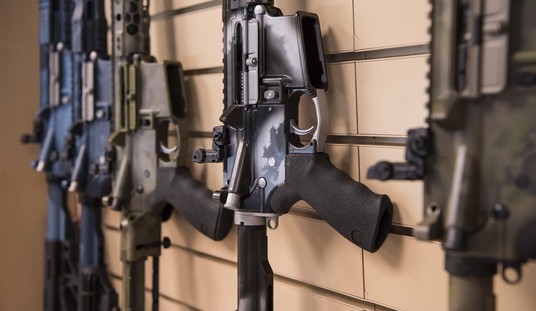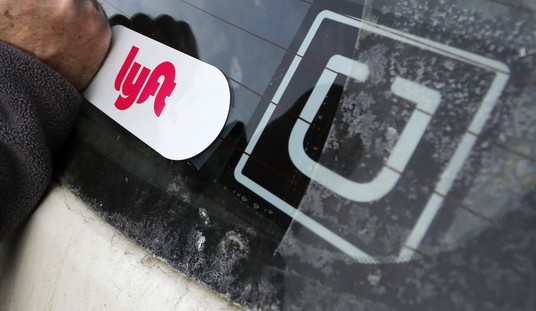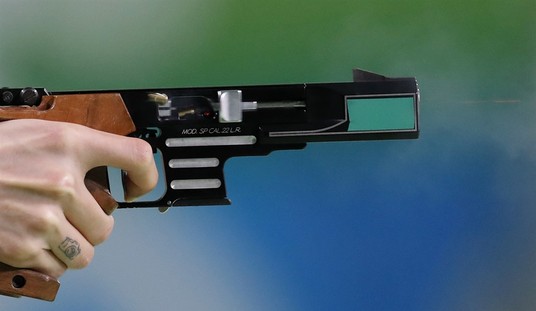It’s not just violent crime that’s been on the increase across the country over the past few years. Traffic fatalities have climbed by more than 20% since 2020, and are on pace to be nearly twice the number of homicides this year…. so where are the calls from Democrats about the need for “common sense car control”?
According to the National Highway Traffic Safety Administration, traffic fatalities in the first quarter of this year were the highest in 20 years, at 9,560. If traffic fatalities continue at their current rate, we’ll end the year with more than 38,000 deaths; about twice the number of reported homicides last year. Strangely, though, Democrats on Capitol Hill don’t seem nearly as alarmed about this as they do about the rise in violent crime we’ve seen during the same time period. There are no hearings investigating the advertising and marketing practices of automakers, no bills introduced to raise the driving age to 21 or to ban the sale of “high powered” sports cars that are designed to go far faster than the law allows.
I also haven’t seen anyone blame the increase in auto fatalities on a surge in car sales, as we’ve seen with guns. Even though there’s really no evidence to support the claim that the Great Gun Run of 2020 was somehow responsible for the sharp increase in violent crime that kicked off in mid-2020, it’s a common argument of gun control advocates. When it comes to fatal car crashes, however, researchers and academics appear much more willing to point the finger at increased stress brought on by the COVID-19 pandemic and the government response.
How did Covid lead to more crashes?
At first, researchers thought that emptier roads might be the main answer. Open roads can encourage speeding, and speeding can be fatal. But even as traffic returned to near-normal levels last year, traffic deaths remained high. That combination weakens the empty-road theory, as Robert Schneider, an urban-planning expert at the University of Wisconsin-Milwaukee, said.
The most plausible remaining theories tend to involve the mental health problems caused by Covid’s isolation and disruption. Alcohol and drug abuse have increased. Impulsive behavior, like running red lights and failing to wear seatbelts, also seems to have risen (as my colleague Simon Romero has reported). Many Americans have felt frustrated or unhappy, and it seems to have affected their driving.
“They’re a little bit less regulated — they might not be considering consequences,” Kira Mauseth, a clinical psychologist at Seattle University, has said. Frank Farley, a psychologist at Temple University, put it this way to The Los Angeles Times: “You’ve been cooped up, locked down and have restrictions you chafe at.”
Ken Kolosh, who oversees data analysis at the National Safety Council, a nonprofit group, told me that researchers would need years to tease out all the causes. Confusingly, vehicle deaths did not surge in most other countries during the pandemic, suggesting that stress was a particularly American problem. “The world really felt upside down,” Kolosh said.
I think that probably is the most likely explanation, and it also helps to explain the rise in everything from road rage incidents to unruly passengers on airlines that we’ve witnessed since 2020. Couple that increased stress with a pullback on policing in some cities and overloaded court systems and you not only get a rise in violent crimes but in things like street takeovers as well.
Takeovers have grown in popularity since the start of the COVID-19 pandemic, when city streets were devoid of drivers during lockdowns. In the first six months of 2021, there were 500 reported sideshows in the city of Los Angeles, according to data from the Los Angeles Police Department. During the same span this year, the LAPD has reported 705 takeovers, just 300 fewer than the entire number reported last year. Data on takeovers from the Los Angeles County Sheriff’s Department were not available.
“It’s like a war zone,” former Compton Councilwoman Barbara Calhoun said. The perfectly painted white crosswalks on the major intersections near her home are marred by a tangle of black tracks.
… To Calhoun, it feels as though police have stopped trying to rein in the problem. When she calls the Sheriff’s Department to report a takeover near her home, she said, the response is typically a few patrol cars that flash their cruiser lights.
Representatives from the California Highway Patrol, the Sheriff’s Department and the LAPD say they lack the staffing to safely stop sideshows while they’re in progress. Large crowds can easily become hostile, and coordinated responses to combat street takeovers have failed to curb the events, law enforcement officials say.
CHP officials say officers are discouraged from pursuing suspects in the interest of public safety.
“If you really have two patrol cars out there, you can’t do anything with 200 other cars on the runway,” Sheriff’s Sgt. Michael Downing said. “We’ve had officers attacked. We’ve had patrol cars crashed into. We’ve had people get run over while cars are leaving.
“Our hands are tied by our limited resources, and we can’t really deal with the crowds.”
Seems to me like a lack of law enforcement resources might have something to do with the increase in violent crimes, and perhaps even traffic fatalities as well. To gun control advocates, however, the rise in gun sales and violent crime are the only important factors at work, and the former must have invariably led to the latter; even when there’s plenty of evidence to show that the crime increase is just one small part of the major upheavals in our society brought on by the COVID-19 pandemic and the government response to it.









Join the conversation as a VIP Member